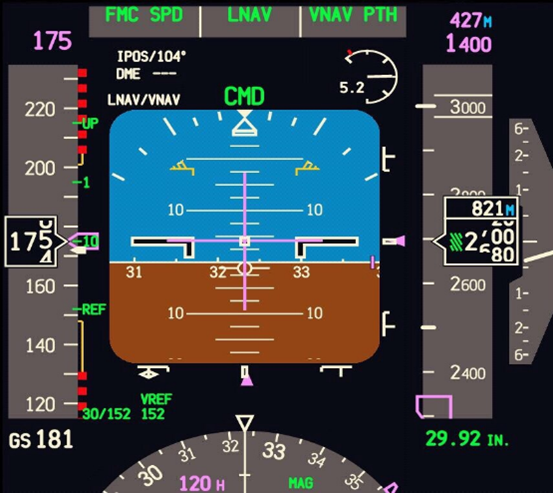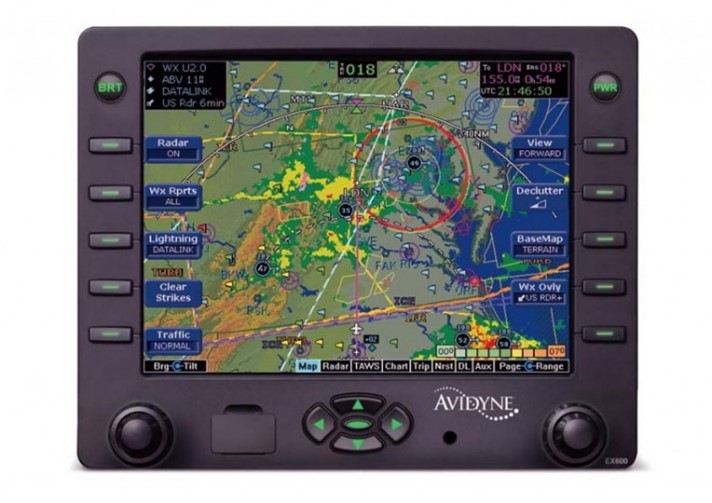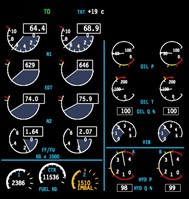Modern aircraft uses a “glass panel” or a “glass cockpit” due to technological advancements. The glass display units often have LCD panels that are 8-inch, 10-inch, or 15-inch in size. The main advantage of a glass cockpit display is that entire information is consolidated efficiently. Glass cockpits contain an Integrated Flight Deck that comprises an electronic display showing the aircraft’s airspeed, altitude, and elevation instruments, as well as the necessary navigation and communication capabilities. Displays and controls for aerial surveillance, aircraft systems, and engine systems may also be found on the flight deck.
Aircraft cockpit display systems improve the human-machine interface by allowing more visual interaction with human gestures. The Global Aircraft Cockpit Display System Market was valued at $1,676.01 million in 2020 and is expected to reach $2,533.39 million by 2028, growing at a CAGR of 5.3 percent during the forecast period, according to Statistics MRC.
The use of displays has shifted from Cathode Ray Tubes (CRTs) to Liquid Crystal Displays. An Electronic Flight Instrument System (EFIS) uses electronic display technology instead of electromechanical. The main components of an EFIS are the Primary Flight Display (PFD), Multifunctional Deck Display (MFD), and Engine-Indicating and Crew Alerting System (EICAS). The first in line to be replaced by EFIS were the intricate electromechanical Horizontal Situation Indicator (HSI) and Attitude Director Indicator (ADI).
The setup of EFIS differs in many situations. For example, a light aircraft would accommodate one display unit, and flight and navigation data would be displayed on that. Whereas a wide-body aircraft would likely accommodate six or more display units. The setup of EFIS will follow the sequence:
- Displays
- Controls
- Data Processors
In this section, we shall discuss the different kinds of display systems that an aircraft is equipped with.
- Primary Flight Deck Display (PFD)
- Multifunctional Deck Display (MFD)
- Engine-Indicating and Crew Alerting System (EICAS)
Primary Flight Deck Display (PFD)
A primary flight display is an important part of an airplane’s flying instruments. It is standard on most commercial aircraft, whether narrow or wide-bodied. It is in the cockpit and serves as a source of data for pilots. It combines data from six-pack gauges such as the flight speed indicator, attitude indicator, altimeter, direction indicator, vertical speed indicator, and turning coordinator. Pilots can refer to the major flying displays instead of watching six distinct gauges.

The primary flight display is a critical system because it enhances situational awareness by alerting pilots to unexpected or potentially dangerous conditions, such as low airspeed or a rapid descent rate, by changing the display color or sounding an auditory warning.
Multifunctional Deck Display (MFD)
MFDs are components of the digital era of modern planes and helicopters. An MFD is a compact screen (CRT or LCD) surrounded by several soft keys (configurable buttons) that may be used to present information to the user in a variety of programmable ways. The benefit of an MFD over an analog display is that it takes up less room in the cockpit since data may be given in numerous pages rather than all at once.

The MFD shows navigation and meteorological data from several systems. It typically shows a customized chart on which the crew may overlay information such as the route plan, weather information, restricted airspace, and aircraft traffic. The MFD may also show the aircraft’s glide radius based on its current position over terrain, winds, aircraft speed, and altitude.
Engine Indicating and Crew Alerting Systems
An Engine-Indicating and Crew-Alerting System (EICAS) is an integrated system used in modern aircraft to allow the crew to view complex information regarding those systems in an easy-to-read format and alert the crew about possible hazardous situations.

EICAS often incorporates instruments for numerous engine parameters such as rotational speed, temperature values including exhaust gas temperature, fuel flow and amount, oil pressure, and so on. Other aircraft systems that EICAS frequently monitors include hydraulic, pneumatic, electrical, deicing, environmental, and control surface systems. EICAS has a high level of connection and offers data collecting and routing.
The flight deck display systems are critical for reducing task complexity and improving situational awareness through the display units that show/display flight information and the condition of the aircraft’s integrated systems. These deck display systems reduce the number of electronics instruments in the cockpit and display only the information essential for aircraft operations to the pilot.
Control Panels
The pilots are given controls where they can choose range and mode and enter information.
The selection made by the pilots is used by the other equipment in the aircraft, then data buses show the pilot’s selection, this way the pilot is only required to enter the selection once. For instance, the pilot chooses the suitable level-off altitude on a control unit. The EFIS repeats this chosen altitude on the Primary Flight Deck Display (PFD) and by analyzing it with the current altitude (from the air data computer) creates an altitude error
display. This process of altitude selection is used by the automatic flight control system to level off, and by the altitude alerting system to give relevant warnings.
Data Processors
The EFIS visual display is created by the symbol generator. The symbol generator gets the information inputs from the pilot, signals from the sensors, and the EFIS format choices done by the pilot. The symbol generator is also known by other names such as display processing computer, display electronics unit, etc.
The symbol generator is not just limited to generating symbols, it has monitoring facilities, a graphic generator, and a display driver. Information from the sensors and controls comes via data buses and is then examined for validity.
eInfochips is a product engineering company with over 25 years of experience in device engineering, digital engineering, quality engineering, and silicon engineering. With extensive aerospace knowledge and end-to-end technical expertise and processes (DO-254, DO-178B, DO-178C, DO-160, and ARP-4754), as well as expertise in aircraft display systems such as head-up/down display, integrated flight deck, EICAS, and EFIS.
eInfochips has successfully worked on multiple integrated flight deck display systems development and platform software verification. We also offer hardware, software, systems, and mechanical engineering services for Avionics.
Contact our experts to find out more about how eInfochips can help the aerospace industry.












